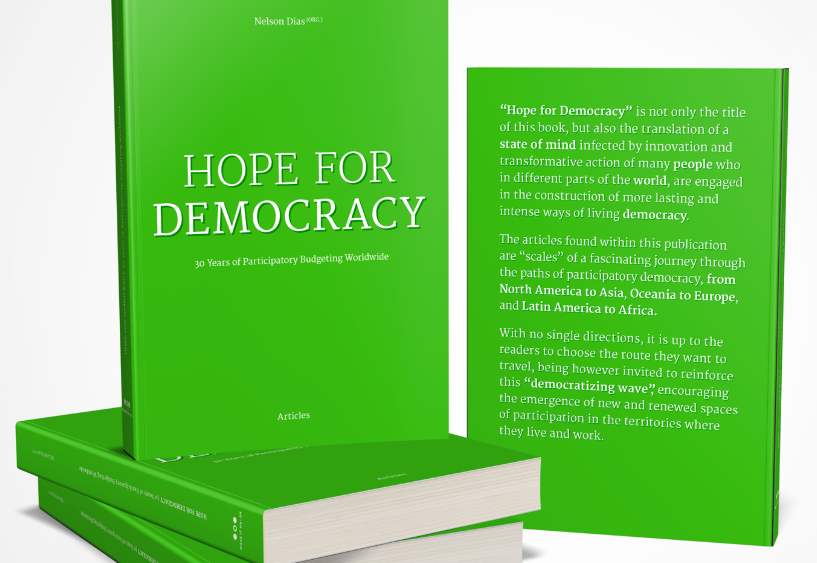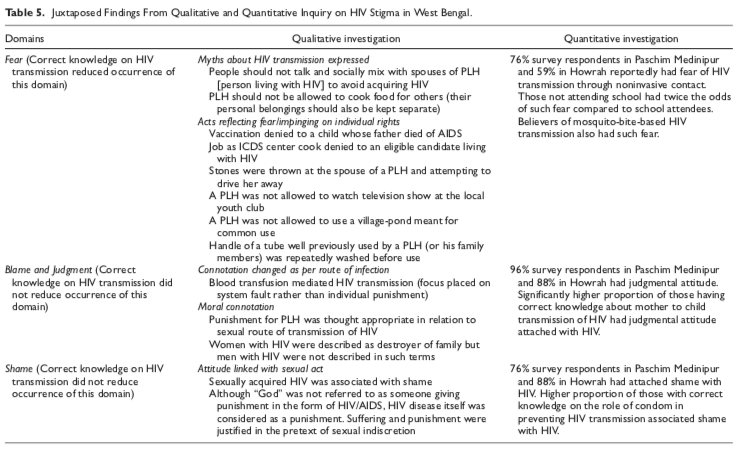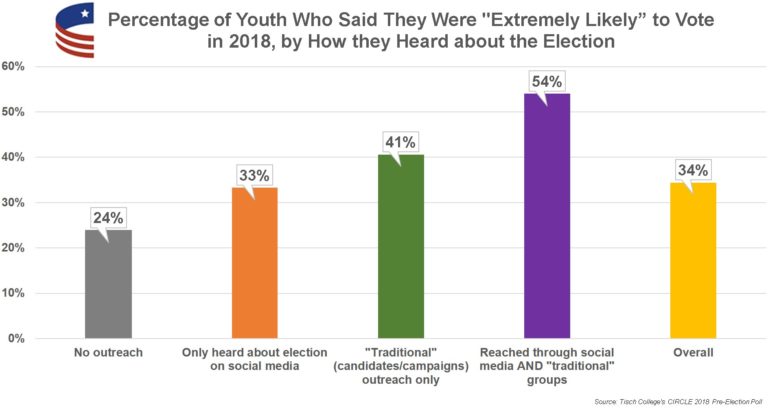For our participatory budgeting enthusiasts out there (and we know there are a lot of you!), NCDD member org – the Participatory Budgeting Project, recently shared the exciting new book, Hope for Democracy: 30 years of participatory budgeting worldwide. The 600-page volume, edited by Nelson Dias, features over 60 authors on their experiences with PB across the world over the last 30 years and offers great insights for how to further grow the PB movement. We are thrilled to note that folks are able to download this book for free! You can read more about it in the post below and find the original announcement on the PBP site here.
Hope for Democracy: A New Book Reflects on 30 Years of Participatory Budgeting
An expansive new volume edited by Nelson Dias features dispatches by more than 60 authors from the frontlines of participatory budgeting’s (PB) growth around the world. This book, Hope for Democracy, could not have come out at a better time for PB supporters in North America. Next year will mark 10 years of PB in the US and new opportunities to take PB to the next level: a big citywide process approved in NYC, hundreds of new school PB processes, and growing political interest in strengthening democracy.
To make the most of these great opportunities to revitalize democracy, we need to first learn from PB’s growth internationally. Dias and his collaborators deliver countless insights in their 600-page panorama. (Download the book for free here.)
 We lift up the biggest lessons below…
We lift up the biggest lessons below…
Why have Hope for Democracy?
Dias begins with an overview of key trends in PB as it spread from Porto Alegre, Brazil in 1989 to over 7,000 localities around the world. PB experts Brian Wampler, Stephanie McNulty, and Michael Touchton note how in Brazil during the 1990s, leftist politicians and activists championed PB as a radical project to “broaden the confines of representative democracy, mobilize followers, and achieve greater social justice” (p. 55); over time, it attracted support from a wide range of actors, including international organizations like the World Bank, because of its potential to improve governance and promote civic engagement. Giovanni Allegretti and Kalinca Copello discuss how, as PB spread internationally, new processes often committed fewer funds, whether measured as lower PB spending per person or as a smaller share of PB in the overall budgets (p. 45).
Benjamin Goldfrank and Katherine Landes examine how this trend has played out in the U.S. and Canada. They report that PB has expanded more slowly than other regions in terms of the number of cities implementing it, the amount of participants, and the volume of funds (p. 161). Yet, Goldfrank and Landes demonstrate this is not due to a lack of public interest: “we find that where PB allocates larger pots of money, the rate of participation tends to be higher” (p. 172). In other words, the more dollars that a PB process allocates, the more people care about it. Moreover, two bright spots on the horizon indicate that PB may grow faster in coming years: its mounting presence in schools and its rising appeal among progressive activists and politicians.
In the light of the recent victories in NYC—PB in all public high schools and citywide PB approved into the city charter—this watershed may be closer than the Goldfrank and Landes anticipated. Chapters on Paris, Russia, and Portugal offer additional insights on how to scale up PB in North America.
Paris offers a model of PB going big
Paris currently runs the largest PB process in the world. Similar to NYC’s coming city-wide process, PB in Paris was championed by a progressive mayor, Anne Hidalgo, who successfully campaigned on bringing PB to Paris in her 2014 election. Mayor Hidalgo wasted no time in implementing her plan of dedicating 5% of the city’s capital budget to PB over the first five years (That’s roughly 500 million euros!). Tiago Peixoto and colleagues use the Paris case to study large-scale issues, like whether online voting improves the process or biases it towards more privileged residents. Their research finds that voting patterns between online voters and those who vote in person are remarkably similar.
PB in Russia innovates, expands rapidly
In 2015, Russia experienced a turning point after which the number of PB processes grew surprisingly fast. This occurred when the Ministry of Finance noted the positive outcomes in regional PB processes and created a framework known as Initiative Financing. The next year, 8,732 PB projects were implemented. By 2018, half of all regional governments in the country (the equivalent of U.S. states) decided to set up PB programs.
Why did so many regions begin PB so quickly, when the federal government did not provide financial incentives to do so? Ivan Shulga and Vladimir Vagin emphasize how the central framework and technical assistance provided by the Ministry of Finance and the World Bank made regional implementation much easier. These processes also made use of some innovative institutional designs. In some programs, municipalities, businesses, organizations, and citizens pledged to co-finance projects, increasing their chance of receiving regional funding. Another program used a form of sortition or citizen jury, in which a cohort of volunteer budget delegates was randomly selected, to work with experts to turn project ideas into full-fledged and feasible proposals.
Portugal leads the way with national PB
Portugal was the first country to run nation-wide PB. While the process is not particularly large in terms of public participation or budget, it does provide one model of a large-scale institutional design that bridges disparate regions.
Roberto Falanga outlines how the process collected nearly 1,000 ideas from each part of the country in 50 assemblies and winnowed them down into viable proposals for a vote. The process did not use budget delegates to revise the proposals. While this may streamline the process, it runs the risk of giving experts and officials more power than public participants. However, an effort was made to minimize this danger by requiring detailed reasons for rejecting proposals and re-including ones that could be revised and made feasible. Still, proposals that were backed by informal social networks may have received undue prominence. For example a bullfighting project won funding even though a majority of the Portuguese public believes that the practice should be banned.
Reflecting on what’s been done, ready for more
It’s an exciting moment to get involved with PB. And it’s an important time to reflect on how far different regions have taken PB. While there are currently around 100 active processes in the U.S. and Canada, Latin America and the Caribbean hosts around 2,500 processes and Europe 3,500. We have some catching up to do.
Donate here to help PB grow.
You can find the original version of this announcement on the Participatory Budgeting Project’s site at www.participatorybudgeting.org/hope-for-democracy-a-new-book-reflects-on-30-years-of-participatory-budgeting/.

 Libraries have the potential to inspire local dialogue on timely issues across communities, positioning library staff as trusted facilitators. Join us for this free one-hour webinar to hear how New York Public Library created a conversation series on important issues in the diverse communities they serve.
Libraries have the potential to inspire local dialogue on timely issues across communities, positioning library staff as trusted facilitators. Join us for this free one-hour webinar to hear how New York Public Library created a conversation series on important issues in the diverse communities they serve.
 We lift up the biggest lessons below…
We lift up the biggest lessons below…
 NCDD envisions a future in which all people–regardless of income, position, background or education–are able to engage regularly in lively, thoughtful, and challenging discussions about what really matters to them, in ways that have a positive impact on their lives and their world. We envision a society in which systems and structures support and advance inclusive, constructive, dialogue and deliberation.
NCDD envisions a future in which all people–regardless of income, position, background or education–are able to engage regularly in lively, thoughtful, and challenging discussions about what really matters to them, in ways that have a positive impact on their lives and their world. We envision a society in which systems and structures support and advance inclusive, constructive, dialogue and deliberation. For sixteen years, NCDD has worked hard to gather visionaries and practitioners dedicated to raising the quality of discourse across many key issues and questions. Many of you have been a part of that – and we’re grateful for you!
For sixteen years, NCDD has worked hard to gather visionaries and practitioners dedicated to raising the quality of discourse across many key issues and questions. Many of you have been a part of that – and we’re grateful for you!